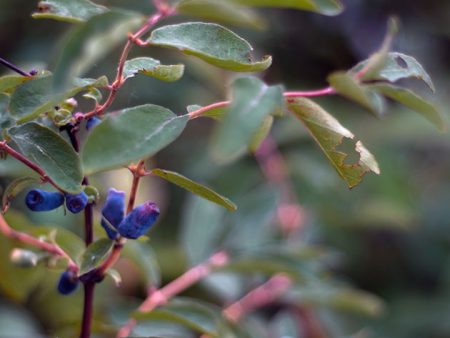 Among the many shrubs that receive the most popularity every year, one can distinguish honeysuckle. This is one of the first spring berries. It can be tasted when other shrubs are just starting to bloom. It ripens in May. However, if earlier this shrub was almost not affected by diseases, now much has changed. The most common honeysuckle diseases and their treatment, photos and many other useful information - further.
Among the many shrubs that receive the most popularity every year, one can distinguish honeysuckle. This is one of the first spring berries. It can be tasted when other shrubs are just starting to bloom. It ripens in May. However, if earlier this shrub was almost not affected by diseases, now much has changed. The most common honeysuckle diseases and their treatment, photos and many other useful information - further.
Autumn Honeysuckle Disease
Leaf spotting
The most common honeysuckle disease. If in autumn it often rains, the air is moist, then on the leaves of the honeysuckle there is a different kind of spotting, which leads to drying of the leaves.
It is important! If diseases are detected, do not spray the shrub with chemicals until the crop is fully harvested!
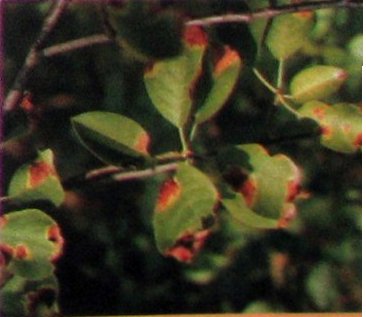
Ramulariosis
The disease can be recognized by brown spots on the front side of the leaves, the inside is covered with white coating. Honeysuckle bush will grow without problems on the north side of the site.
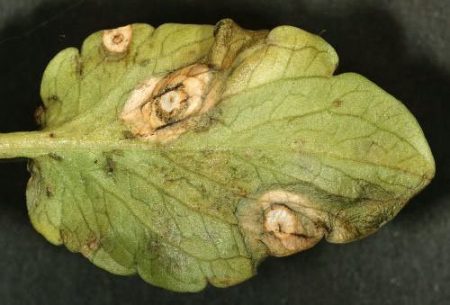
Stem rot
One of the most dangerous diseases of honeysuckle (their treatment and photo) is considered to be stem rot in the fall, from which the branches dry out. Sometimes most of the bushes die.
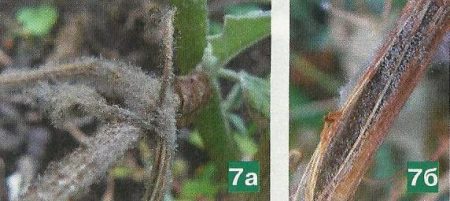
Powdery mildew
Sometimes a whitish-gray coating appears on the leaves. Leaves dry and fall off. This disease can reduce the winter hardiness of honeysuckle.
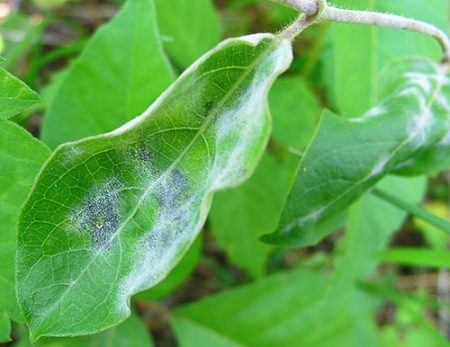
Sooty dew
Unpleasant disease of fungal origin. Honeysuckle leaves are covered with black coating, gradually dry.
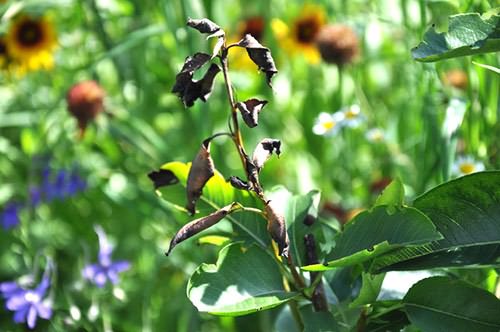
Treatment
To prevent many diseases, shrubs need to be treated with a urea solution. Usually this treatment is carried out in spring and autumn. To do this, dissolve 500 - 600 g of fertilizer in 10 liters of water, then spray the bushes. In some cases, it is enough to process with wood ash.
Honeysuckle pests and control measures
Along with diseases, there are insects that damage leaves and fruits.
Shield
Scalebirds consider honeysuckle to be their favorite shrub. These pests can be found on the bark. They dig in and suck out the juice from the branches of honeysuckle. Mostly breed in the spring, but in the fall lay eggs. Many larvae appear from them. They creep along the branches and trunk of the bush. As soon as they stick to the cortex, after a few days, they begin to become covered with shields and no longer move until the end of their days.
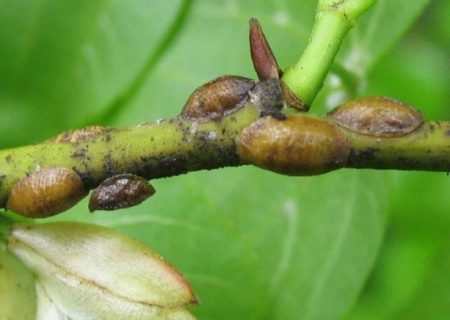
After a month and a half they become adults, by autumn they lay a lot of eggs that tolerate winter well. To destroy them, you need to spray the honeysuckle twice. To combat the disease of honeysuckle (their treatment and photo) with a scabbard use: Rogor, Actellik. Usually produce processing in July, with an interval of 2 weeks.
Aphid
Another very dangerous pest is considered to be aphids. It reproduces very quickly. The leaves turn yellow and dry, young shoots of the bush die. Females lay larvae on the underside of the leaves. Therefore, spring treatment of plants is used for prevention: Actellik, Eleksara.
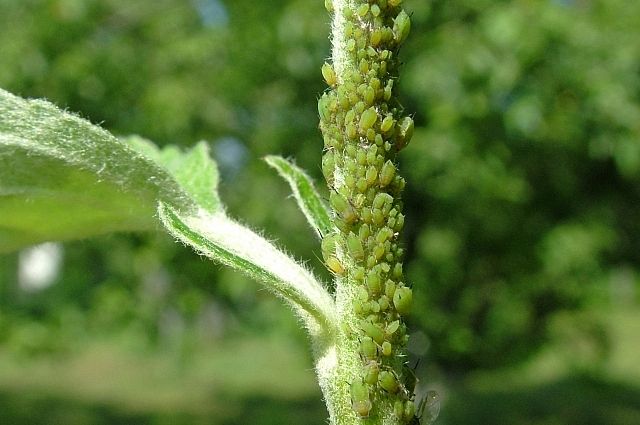
Mite
It is very difficult to get rid of the tick. It often starts with high humidity, if the plant grows in a place obscured by other shrubs.The insect multiplies rapidly, the leaves curl, the edges become corrugated. Then they fall prematurely, sometimes blacken.
For prevention, you need to ensure that the honeysuckle bushes are not darkened by other trees. For processing, you can used: Actellik, Omayt. About which pests most often settle on currants and how to deal with them.
It is interesting! Since all chemicals for processing honeysuckle are harmful to health, you need to plant dill and coriander near the plant. They will attract lacewings and ladybugs, which will destroy the pests.
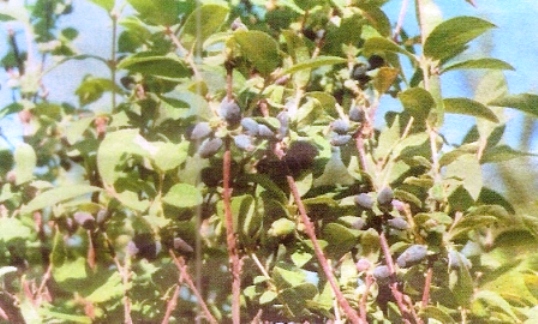
In order for the honeysuckle to be healthy and bear fruit well, you need to choose a suitable sunny and well-ventilated place, to properly care for the plant. To carry out preventive measures, then the appearance of pests and diseases on the honeysuckle (their treatment with a photo can be found in the article) can be avoided!

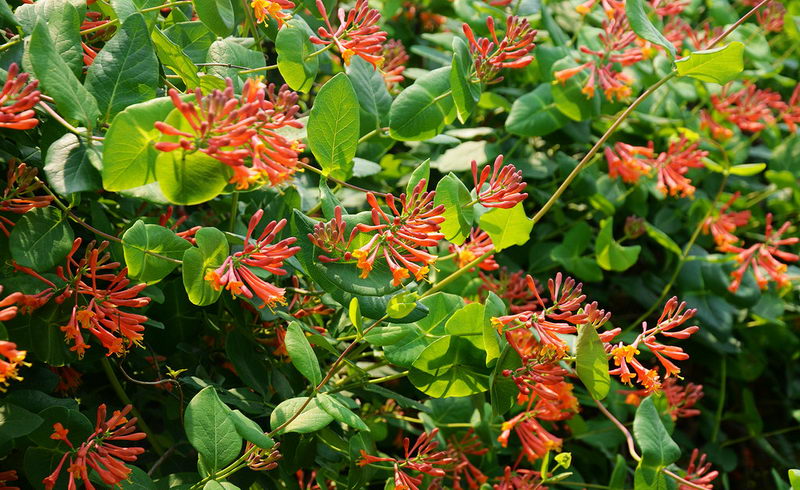
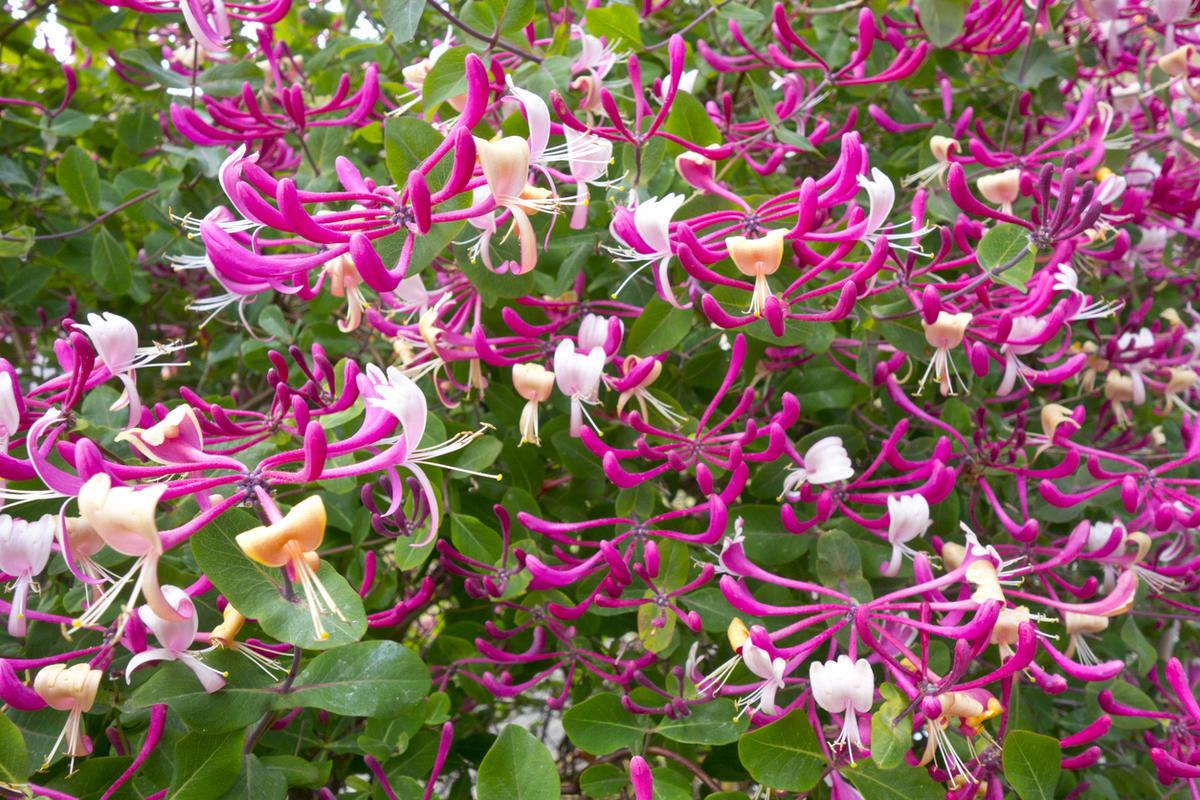
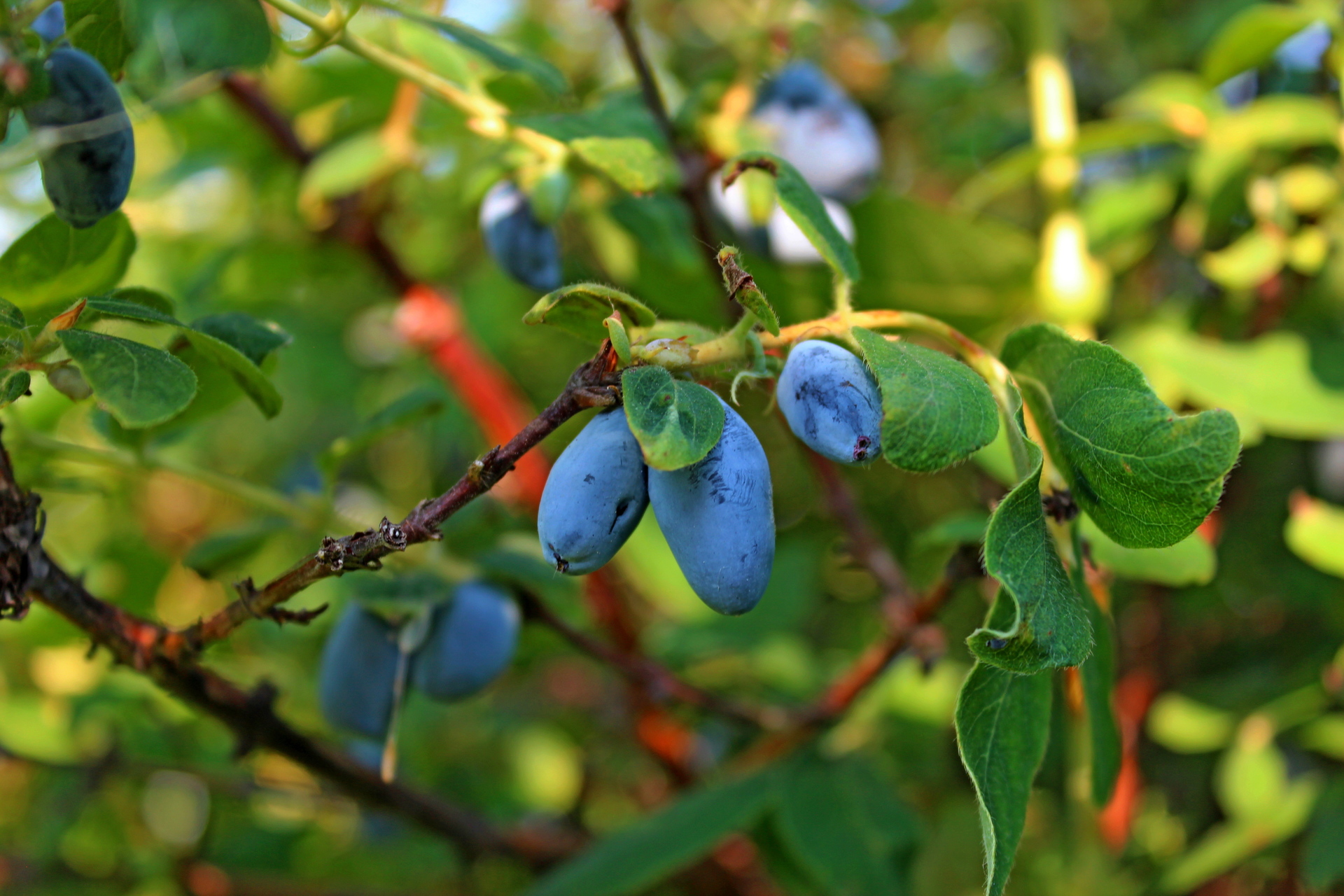
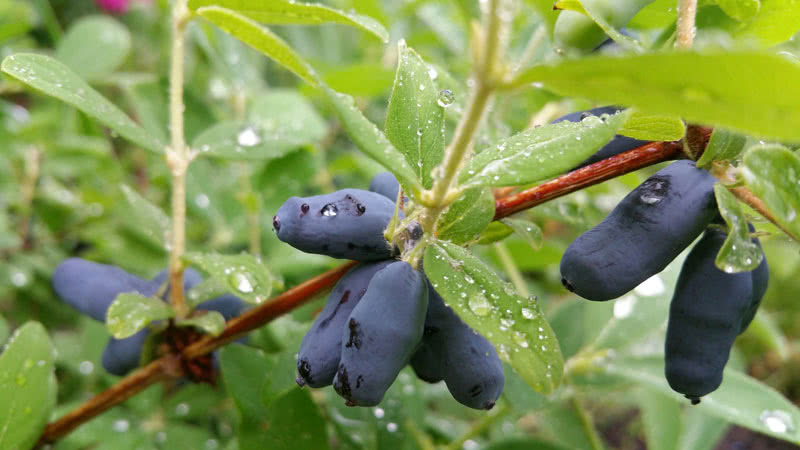 Edible honeysuckle: planting and care, methods of reproduction, disease
Edible honeysuckle: planting and care, methods of reproduction, disease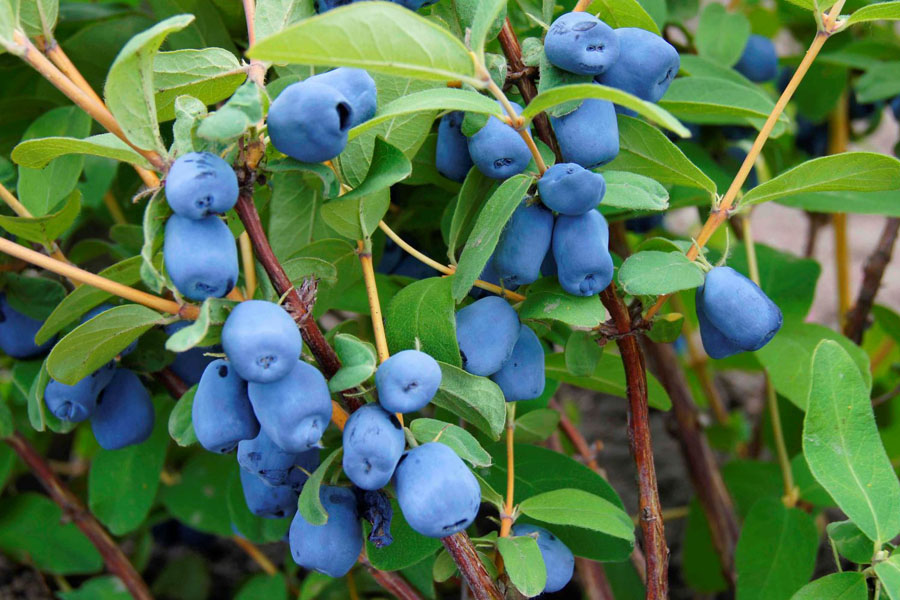 Honeysuckle pruning: when and how to do it correctly, features, patterns
Honeysuckle pruning: when and how to do it correctly, features, patterns Honeysuckle in the fall: planting and care, transplanting, breeding, shelter for the winter
Honeysuckle in the fall: planting and care, transplanting, breeding, shelter for the winter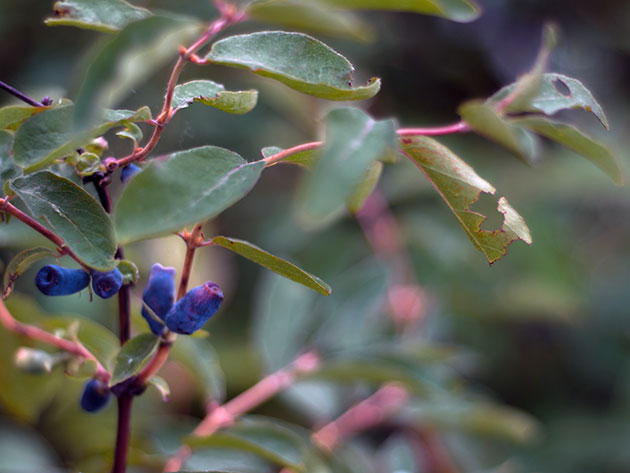 Honeysuckle disease treatment
Honeysuckle disease treatment